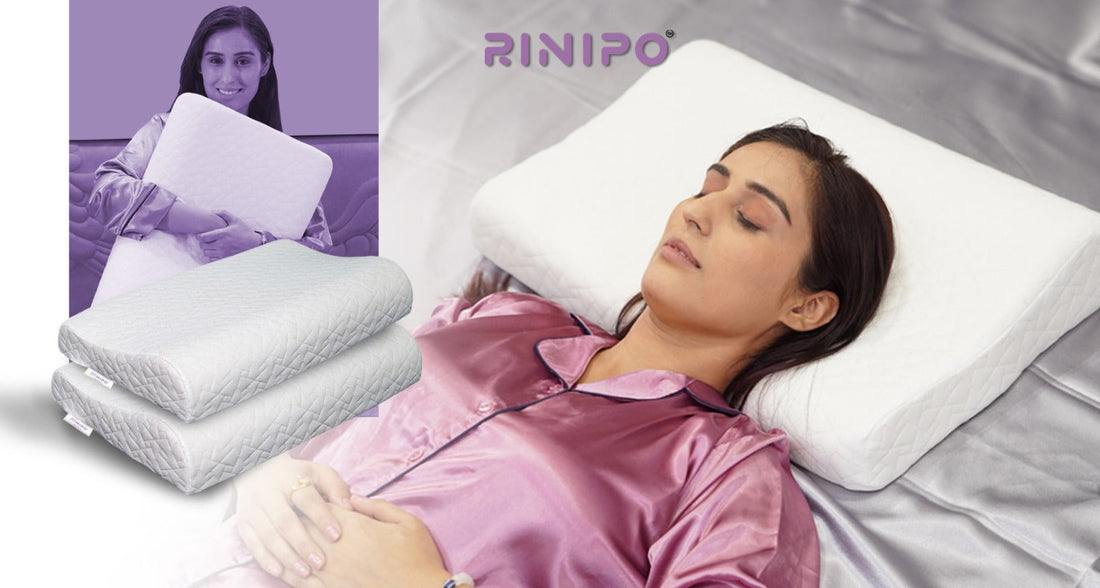
Best Sleeping Positions for a Pain-Free Night with a Memory Foam Pillow
Share
Introduction
Sleep quality is critical to fitness & wellbeing. Yet, sleeping in an improper position may create pain, rigidity, and long-term pain. The proper sleeping position, along with a good memory foam pillow, will ease pain and ensure a peaceful night's sleep. In this guide, we will discuss the best sleeping positions for a pain-free night on a memory foam pillow and provide advice on how to maximize your sleeping posture.

Why to Use a Memory Foam Pillow?
Memory foam pillows are made to mold to the shape of your head and neck, giving maximum support and alignment. The convenience of using a memory foam pillow are:
Increased spinal alignment for alleviating neck and back pain.
Even weight distribution to reduce Place of pressure.
Improved support for different sleeping positions to suit varying body types and preferences.
Hypoallergenic properties to improve air quality and lessen allergies.
Best Sleeping Positions with a Memory Foam Pillow

1. Back Sleeping (Supine Position)
One of the best sleeping positions for spinal alignment is on your back. A memory foam pillow supplies mandatory support keep the head and neck in a neutral position, which eases stress and avoids pain.
How to optimize this position:
Choose a medium-thickness memory foam pillow to support the natural curve of your neck.
Put a small pillow under your knees to relieve lower back strain.
Relax arms at your sides to avoid shoulder stiffness.
2. Side Sleeping (Lateral Position)
Side sleeping is another strongly suggested position, especially for those who have neck and back pain. A memory foam pillow ensures proper spinal alignment by keeping the head and neck in an optimal height.
How to maximize this position:
Select a contoured, high-loft memory foam pillow to absorb the head and neck.
Put a pillow between the knees to limit lower back and hip stress.
Position arms naturally to prevent pressure on shoulders.
3.Fetal Position
The fetal position, in which you curl up on your side with your knees slightly bent, is best for those who have lower back pain or sleep apnea. A memory foam pillow provides the proper balance of support and comfort.
How to maximize this position:
Use a firm memory foam pillow to keep your neck properly aligned.
Relax your legs to prevent curling too much, which can lead to stiffness.
To add more back support, think about placing a tiny pillow between your knees.
4.Stomach Sleeping (Prone Position) – Not Recommended
Although Some people take a nap on their stomachs, it is not advisable because of the pressure it puts on the spine and neck. Nevertheless, if you have to sleep on your stomach, a thin memory foam pillow can help lessen uncomfortable.
How to maximize this position:
Utilize a low-profile memory foam pillow to minimize neck strain.
Position a pillow under your hips to support the lower spine.
Make an effort to move to a sleeping posture on your side or back for backup.
More Tips for Restful Pain-Free Sleep
Select the appropriate memory foam pillow: Choose the pillow that suits your sleep position and body type.
Support a neutral spine: Align the head, neck, and spine to minimize joint stress on joints.
When necessary, swap out your pillow: Memory foam pillows need to be replaced every one to two years since their usefulness deteriorates with time.
Practice good sleep hygiene by maintaining a regular sleep schedule, avoiding excessive screen time before bed, and creating a comfortable location to rest.

Conclusion
Your sleeping posture and pillow selection greatly contribute to the quality of sleep and pain levels. The mandatory support improve spinal alignment, reduce stress, and increase comfort is provided by a memory foam mattress. With the proper sleeping posture and a high-quality memory foam pillow, you are assured a pain-free and rejuvenating night's sleep.
If your sleeping habits aren't comfortable, think about switching to a memory foam pillow of the highest caliber.
